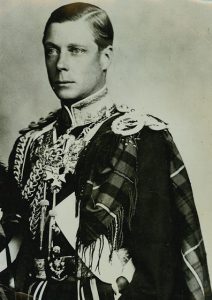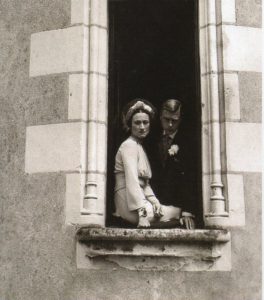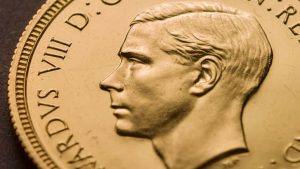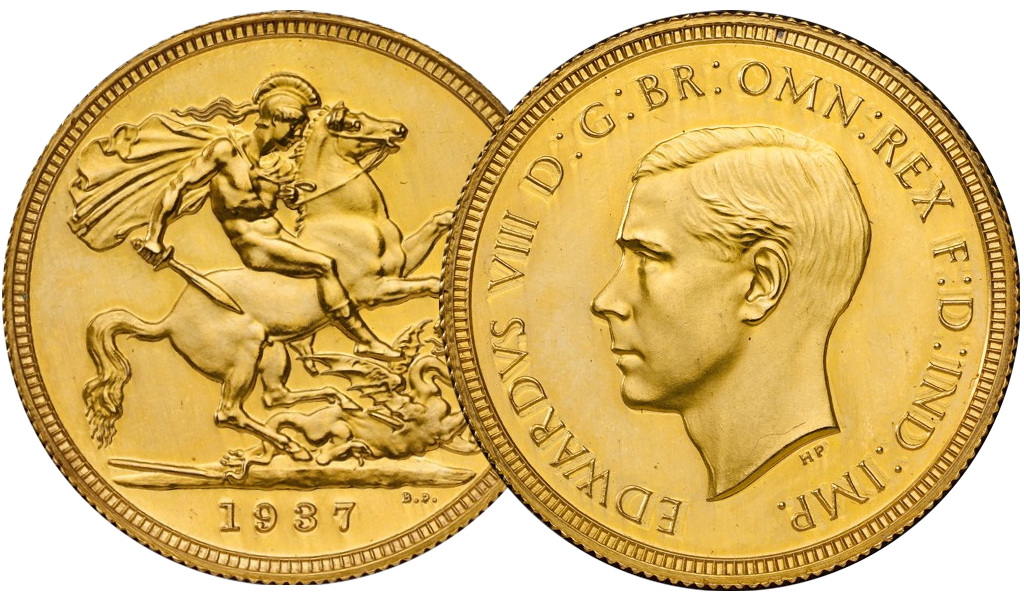On today’s date in 1936, after several bouts of illness and five days bedridden at Sandringham House, King George V died at the age of 70.
A heavy smoker who suffered a serious injury after being thrown from a horse in 1915, George V also fell ill with sepsis in 1928, after which time his son Edward took over some of his duties for about two years.
The king, however, never fully recovered and began oxygen therapy in the final year of his life, according to Sarah Bradford’s 1989 book, King George VI. In December 1935, the death of Princess Victoria – his favourite sister – saw George fall into a deep depression from which he also failed to recover.
On Jan. 15, 1936, the king went to bed, where he would remain for another five days of declining health. By Jan. 20, he was administered lethal injections of morphine and cocaine by Bertrand Dawson, the royal family’s physician, who wished to preserve the king’s dignity and supported the “gentle growth of euthanasia,” according to a 1986 story by The New York Times.
George died that night at 11:55 p.m. A stamp collector, he’s also remembered as a hard-working and widely admired monarch, according to John Gore’s 1941 book, King George V: A Personal Memoir.

King Edward VIII (1936 portrait shown) served as king from his father’s death on Jan. 20, 1936, until his abdication on Dec. 11 of that year.
A NEW KING
Soon after the death of his father, Edward VIII ascended the throne to start his reign as king.
Edward was born on June 23, 1894, during the reign of his great-grandmother Queen Victoria, and was later invested as the Prince of Wales in 1911.
In 1932, he made his first visit to Canada, where he bought a ranch in the foothills of Calgary.
Four years later, when he became King Edward VIII, he proved to be a non-traditionalist and frequently broke customs, the most glaring of which caused a constitutional crisis and an eventual abdication.
On Dec. 11, 1936, Edward VIII abdicated the throne after a reign of only 326 days to marry “‘the woman I love,” U.S. divorcee Wallis Warfield Simpson.
“You all know the reasons which have impelled me to renounce the throne. But I want you to understand that in making up my mind I did not forget the country or the empire, which, as Prince of Wales and lately as King, I have for twenty-five years tried to serve,” he said in his abdication speech on Dec. 11, 1936.
“But you must believe me when I tell you that I have found it impossible to carry the heavy burden of responsibility and to discharge my duties as King as I would wish to do without the help and support of the woman I love.”
The only British sovereign ever to resign the crown voluntarily, Edward VIII then became the Duke of Windsor. His estate was managed by Toronto financier Sir Edward Peacock until his death on May 28, 1972, in Paris, France.
The next in line was George VI, who reigned from Dec. 11, 1936, until his death on Feb. 6, 1952, when the current monarch – Queen Elizabeth II – ascended to the throne.

King Edward VIII abdicated the throne in December 1936, following a relatively short 326-day reign, to marry U.S. divorcee Wallis Warfield Simpson. Photo by ‘thefoxling’ via CC BY-NC-SA 2.0.
BRITAIN’S MOST VALUABLE COIN
Last January, 84 years after Edward VIII ascended and then quickly abdicated the throne, a rare sovereign complete with his wrong-facing effigy was acquired by an anonymous collector for £1 million (about $1.7 million Cdn.).
Sourced by the U.K.’s Royal Mint from a U.S. collector and returned to Britain for the anonymous buyer, it’s now the most expensive British coin of all time.
“The Edward VIII sovereign is one of the rarest and most collectable coins in the world, so it’s no surprise that it has set a new record for British coinage,” said Rebecca Morgan, head of collector services for the 1,134-year-old Royal Mint. “We were delighted to be able to locate such a special coin for our customer and bring it back to the U.K. to make history once more.”
The 22-karat sovereign – a £1 gold coin struck in Britain beginning in 1817 and withdrawn from circulation about a century later, although it remains legal tender – was one of six trial strikes produced by the Royal Mint in 1936, when Edward ascended the throne. Today, only two of these examples are privately owned, with the remaining four in institutional collections.
“When the opportunity came along, I felt I could not turn it down. It was a once-in-a-lifetime opportunity,” the coin’s new owner told the BBC. “I’m aware that is a lot of money for a coin, but if I did not secure it now, I’d not get the chance again.”
Slated to enter general circulation on Jan. 1, 1937, the 1937-dated sovereigns were never released to the public.

The first son of King George V and Queen Mary graces Canada’s 1935 Series $5 banknote as Prince Edward.
‘NEVER MEANT TO EXIST’
After Edward’s abdication, production of the 1937 sovereign was cancelled and no coins bearing his portrait ever entered circulation in the United Kingdom.
While Edward asked for a set of the cancelled coins, King George VI – his brother – refused his request because the unissued coins were deemed unofficial, reported the BBC in 2016.
“The Edward VIII sovereign is part of numismatic legend, belonging to a series of coins that were never meant to exist and were hidden from the public for decades,” said Matt Curtis, of the Royal Mint Collector Services. “This sovereign is significant not only because of its rarity but because it sits at the heart of an international story and has been treasured by collectors in both the U.K. and U.S.”
For many years after their production, the 1937 sovereign specimens “were locked away and not treated as part of the museum collection,” according to Graham Dyer, Royal Mint Museum senior research curator and author of the 1973 book The Proposed Coinage of King Edward VIII.
“There was such an air of mystery about the coinage of Edward VIII,” Dyer told the BBC in 2016. “The Royal Mint had actually made all the preparations to start production of the new coins on 1 Jan., 1937, and geared up to strike the first coins at 8 a.m. on that day.”
Few people knew what survived, Dyer added, and the coins’ existence was “something of a mystery even within the Royal Mint.”
That all changed in 1970, when Sir Jack James – the deputy mint master since 1957 – retired, and a sealed cardboard box was retrieved from a safe in his office. Within the box were 49 coins, including uniface patterns not originally associated with Edward VIII.
Slightly smaller and lighter than a modern pound coin, the 1937 sovereign weighs 7.98 grams with a 22-millimetre diameter.

Traditionally, each monarch faces the opposite way to his or her predecessor whenever new currency is produced; however, King Edward VIII insisted on facing the same way as his father, King George V, because he preferred his left profile. Photo by the Royal Mint.
LEFT-FACING PROFILE BROKE TRADITION
Aside from his love life, another way Edward broke with tradition was through his proposed effigy.
“From the time of Charles II onwards, a tradition developed of monarchs being represented on the coinage facing in the opposite direction to their immediate predecessor,” reads the royal family’s website.
“The exception to this was in the brief reign of Edward VIII. He liked portraits of himself facing to the left, even though, according to tradition, he should have faced to the right. Designs for proposed coins for his reign show Edward VIII facing to the left.”
Edward insisted his effigy face left – like his father – to show the parting in his hair, according to Allan Michie’s 1952 book, God Save the Queen.
The nearly 300-year-old tradition was restored during the reign of George VI, whose portrait faces left “as if Edward VIII’s had faced right.”
PREVIOUS RECORDS
In 1984, the 1937 sovereign pattern sold in Tokyo for £40,000 before fetching £516,000 in 2014 at an auction in London, according to the Royal Mint, which added the latter sale set a record that was dwarfed by the recent sale.
Offered in 2014 by A.H. Baldwin & Sons, the coin sold to an anonymous floor bidder, doubling its estimate of £250,000-£300,000, according to a 2014 story published by Coin World. It belonged to the Hemisphere Collection of Gold Sovereigns – was the first complete monarchical collection of gold sovereigns ever offered at auction – which spanned 525 years, 15 monarchs and seven mints with nearly 400 individual sovereigns altogether.

